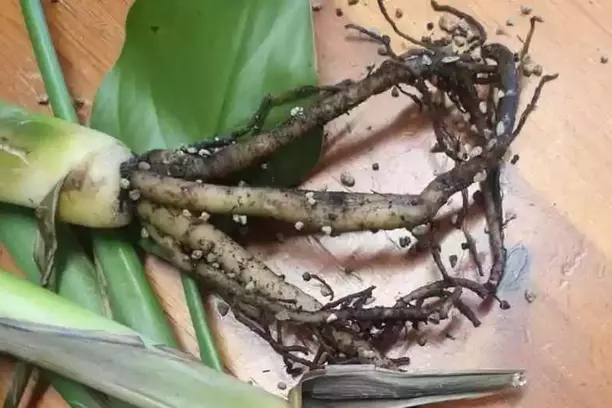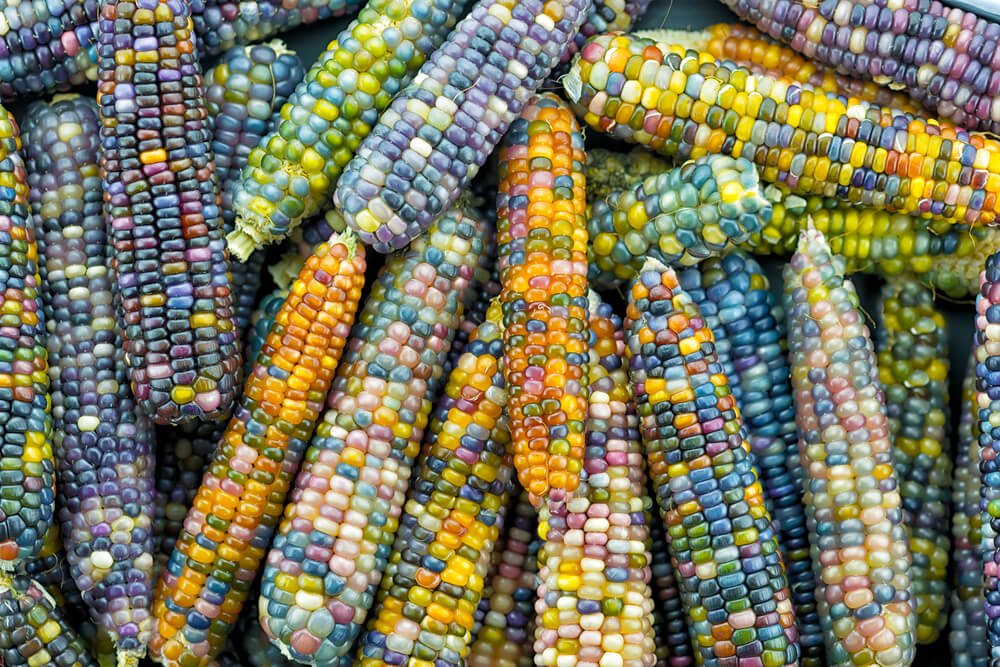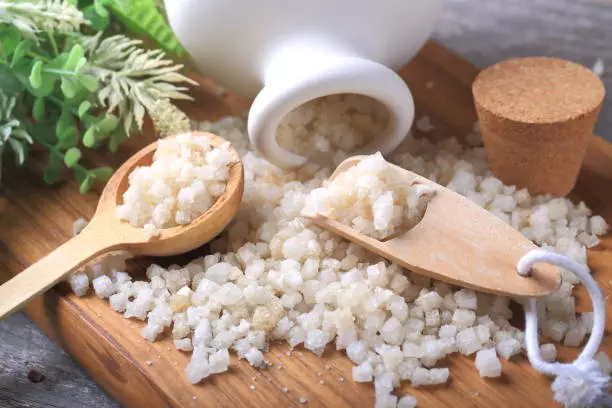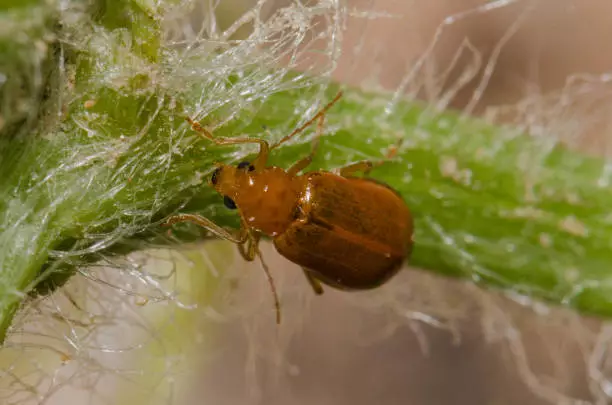Most people believe that money trees increase the positive vibes and energy around a home. But to have a healthy plant, provide it with a good environment with all the growth requirements.
The money tree – An overview
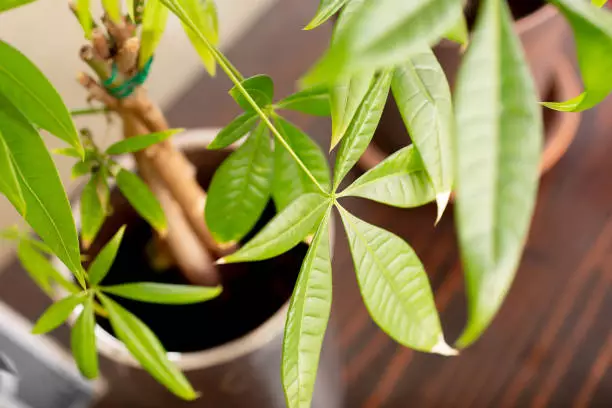
Pachira Aquatica is also known by other non-scientific names such as provision tree, Guiana chestnut, Sabanut, or Malabar Chestnut. Commercially, it is called a money tree or money plant.
The tree derives its name from the story of a poor man who prayed for riches. He then came across this unique plant and took it home as an omen. He made money selling tree seedlings propagated from the tree. Thus, it was called the money tree.
The plant can grow outdoors in hardy zones like Southern California, Texas, Hawaii, and Florida.
The origin
Money tree as a houseplant became popular in the 1980s. A Taiwanese truck driver took the tree home and braided the young stems. He did that to “lock in the luck” of the money tree. He might have done it for fun, but that is how many indoor plant enthusiasts have braided the money tree to date to enhance its appearance.
The plant is also believed to release positive “Chi” energy in homes.
Today, the money tree is widespread and can be grown in homes and offices.
The name Aquatica refers to the money tree’s ability to thrive in a wetland ecosystem. Pachira is derived from the Guyanese language implying “sweet water nut.” The plant is sold as a houseplant and uses the bonsai styles to train its growth.
Money trees reach a height of 60ft when growing outdoors. Indoors, they can only reach about six or eight feet tall. As a houseplant, you should rotate the pot evenly over time for the foliage to grow evenly.
Money trees are usually sold as small plants with braided trunks of either three, five, or seven stems. Nurseries braid the trees when they are young, and they will continue to grow in this manner as they develop.
It is rare to start it from seed at home, but if you intend to plant the tree outdoors, you should do so in the spring. Indoors or outdoors, the trees will grow fast, gaining 24 inches of height every year.
Money plant characteristics and identification
The Pachira Aquatica can easily be identified by its leaves, flowers, and stems. The unique features such as palmate leaves and multiple stems that can be braided together to make the crown appear bushy clearly distinguish the plant.
Here’s how you can easily identify the money tree:
Money tree leaves
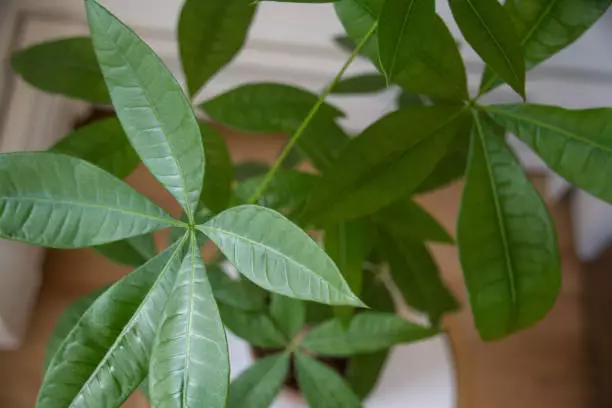
The money plant has shiny green palm-shaped leaves, lanceolate leaflets, and a sleek green bark. Young branches are green, and the reasonably smooth bark is brown to gray and slightly broken. The long-stalked and leathery leaves are arranged at the end of the branch.
The petiole grows to more than 20 cm long. The shiny bright green leaves consist of eight or nine leaflets.
Furthermore, the smooth leaflets with short stalks can be up to 27 cm long with spiked round or pointed tips. In addition, money tree leaves have light central veins. Also present are slanting stipules.
The plant’s roots are slightly thickened and serve as its water reservoir. Pachira Aquatica has a large crown when grown outdoors and can reach a height of 18 meters (59.1 feet).
The flowers
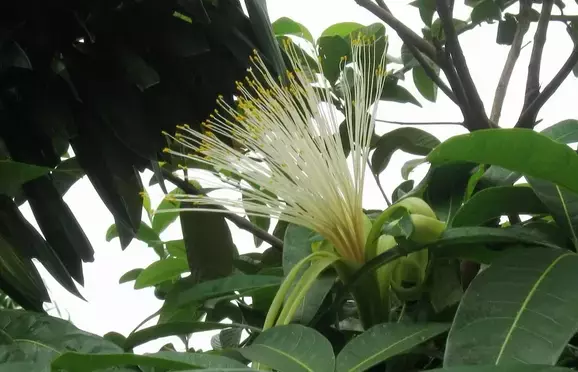
Flowers have a striking appearance; money trees produce stunning yellowish-white flowers that are replaced by large seed pods containing peanut-like nuts. The flowers appear like a banana peel with a hair-like yellowish-orange stamen. The petals are long and narrow.
The money plant is a hermaphrodite, and both the flowers and leaves are edible.
Although you can braid the tree’s multiple stems by yourself to have a fairy look, you can purchase one that is already braided.
How to care for the money tree
While the money tree can grow well outdoors, the plant prefers tropical climate areas. It is a bit sensitive to the cold. For this reason, it grows well as a houseplant with low maintenance.
| Requirement | Quality and Quantity |
| Light | Bright, indirect light |
| Temperature | 65°F to 75°F |
| Water | Water money trees every one to two weeks when the top 1-2 inches of the soil is dry. |
| Humidity | At least 50% |
| Soil | Regular potting soil, peat, and moss-based mix. |
| Pruning and shaping | Prune in spring and summer. Rotate at 45 degrees for even growth. |
| Pest and diseases | Mealybugs and scales. Spray neem oil to control them. |
| Fertilizer | Fertilize the tree 3-4 times a year during winter and summer. |
Giving a money tree the appropriate amount of light and water is the key to growing it indoors but it will not flower indoors since it requires pollination, which is facilitated by bats in the wild. Despite this, when properly cared for, money trees can thrive well while also increasing the positive energy in your home.
Provide bright, indirect light
Money trees require at least six hours of bright but partial light on a daily basis. When growing indoors, they can still thrive in artificial fluorescent light. Avoid placing the plant in a place with direct sunlight.
RELATED: WHAT IS INDIRECT LIGHT FOR PLANTS
You can spot most of the money tree’s health problems by simply observing its leaves. If the green leaves start turning yellow, your plant is not getting enough light, and photosynthesis is not occurring as required. You should move it to a source of light.
Maintain a temperature between 65°F and 75°F
A money tree prefers temperatures ranging between 65°F and 75°F. If you are in an area that gets a bit frosty, bring the tree inside once those temperatures drop. Avoid placing the plant in a place with cold drafts or extreme heat. For example, avoid areas near air conditioning vents, a window, or a door that allows drafts.
Since the money plant is a tall indoor tree, especially when braided, give it a 45-degree rotation frequently to prevent it from bending or tilting towards the source of light. The rotation will give it an even growth by ensuring all sides of the plant get equal light.
RELATED: WHAT ARE THE BEST LOW-LIGHT INDOOR PLANTS
Water every one to two weeks
Money trees like to be watered once every one to two weeks but only when the top 1-2 inches of soil is dry. Keep in mind the plant’s native growing conditions and mimic them indoors.
Naturally, the plant goes through an intense rainy season followed by equivalent periods of dryness. It is best to water the tree every one to two weeks when grown indoors.
If you water your money tree while the soil is still moist, you risk overwatering it, leading to root rot. Gently insert a finger into the soil to see if it’s dry enough. Water your money plant when the top 1-2 inches of the soil is dry.
If the soil is dry, care for the money tree by watering it consecutively for two or three days and allowing the soil to dry out before watering it again.
Water as much as possible and stop when you notice water flowing out of the drainage holes and into the tray beneath the pot. However, the amount of water and the frequency may also depend on the type of soil the plant is growing in. Highly draining sandy soils may require fairly frequent watering than slow-draining soil types.
Humidity
The ideal humidity for money plants is 50%. If the trees don’t get enough humidity, the leaves will start to dry and droop. Setting up a humidifier near your plant will revive it and keep it healthy if you live in a hot and dry area.
If you already have a humidifier, turn it on for more extended periods or purchase a second humidifier. Make sure your money plant isn’t too close to any heat vents that could cause the air to dry out. Improper humidity and temperature can cause money tree leaves to curl and wilt.
RELATED: HOW TO SAVE MONEY TREE LEAVES FROM CURLING
Watering your money tree more may not help with the atmospheric dryness, and it can even make things worse by creating root rot or yellowing foliage.
Soil type
Money trees thrive in nutrient-rich and well-drained soil. Peat and moss-based soil mixes are preferred for these trees, but any quick-draining soil combination, such as ordinary cactus soil or flower soil, would suffice.
If the soil requires more significant drainage, adding a little sand or gravel to the mix will help improve the flow of water and reduce waterlogging.
Pruning
Cut off and remove dead and damaged leaves periodically using sterilized pruning shears. Your money tree will remain healthy and green as a result of this. Damaged leaves are torn or split off at the stem, while dead leaves are brown and wilted.
Pruning your money plant will make it concentrate its energy and nutrients on forming new, healthy foliage instead of supporting dead leaves that add no value to its development.
When you see a dead or damaged leaf, use the shears to cut it off at the base of the growth as follows:
- Visualize the outlines of the shape you desire for your money tree.
- Check for growth that extends beyond the fake lines’ boundaries.
- With your pruning shears, cut off the growth that extends over the borderline.
- Clip the growth directly after the leaf node closest to the borderline when clipping it off.
Money trees are often round, but you can shape them as you like. Square or triangular shapes are also acceptable. However, do not remove too many leaves because the plant can go into a shock.
Here’s a video to help you with the pruning of money trees:
Pest and disease control
Outdoors or indoors, money trees are susceptible to a variety of common houseplant pests. The most problematic ones are mealybugs and scales.
If an infestation occurs, use a moderate insecticide or horticultural oil to treat the plant right away. Spray money plants with a mix of insecticidal soap, neem oil, and warm water every two to three days until you get rid of stubborn pests.
Fertilizer
Money plants require 3-4 fertilizer applications every year. When your tree grows actively during spring and summer, apply an all-purpose fertilizer with an NPK ratio of 20-20-20. It will keep the plant healthy and resistant to diseases.
Remember to water the tree every time you apply the fertilizer so that the young roots are not burned by excess salts.
Stop fertilizing during summer. Your money tree doesn’t require fertilizer outside of the growing season because its growth slows down and the plant requires fewer nutrients.
References:
[1] Kumar, P., & Dwivedi, P. (2011). Bonsai: symbol of culture, ideals, money, and beauty.
[2] International Journal of Agriculture, Environment and Biotechnology, 4(2), 115-118.Penn
[3] State Extension. (2018). Pachira Aquatica: Trees of Prosperity.
